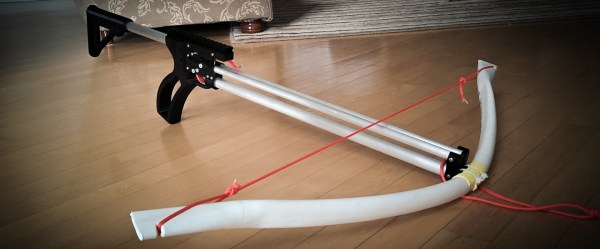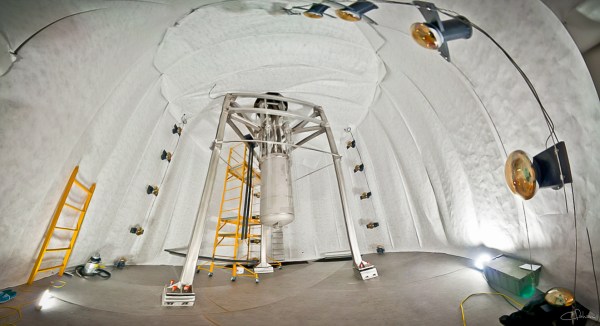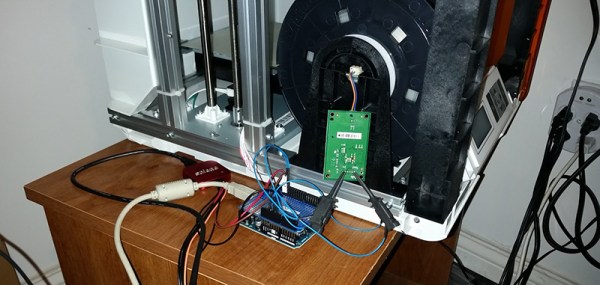As it turns out, it’s not feasible to print an entire crossbow yet. But [Dan]’s crossbow build does a good job of leveraging what a 3D printer is good at. Most of the printed parts reside in the crossbow’s trigger group, and the diagrams in the write-up clearly show how the trigger, sear and safety all interact. Particularly nice is the automatic nature of the safety, which is engaged by drawing back the string. We also like the printed spring that keeps the quarrel in place on the bridle, and the Picatinny rail for mounting a scope. Non-printed parts include the aluminum tubes used in the stocks, and the bow itself, a composite design with fiberglass rods inside PVC pipe. The video below shows the crossbow in action, and it looks pretty powerful.
Actually, we’ll partially retract our earlier dismissal of entirely 3D-printed crossbows, but [Dan]’s version is a lot more practical and useful than this model. And for a more traditional crossbow design, check out this entirely hand-made crossbow.
Continue reading “Powerful Crossbow Is Almost Entirely 3D Printed”
















